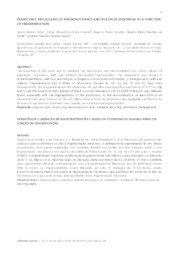Persistence and release of macronutrients and silicon of pigeonpea as a function of fragmentation.
Persistence and release of macronutrients and silicon of pigeonpea as a function of fragmentation.
Author(s): FERRARI NETO, J.; CRUSCIOL, C. A. C.; SORATTO, R. P.; COSTA, C. H. DA; CASTRO, G. S. A.
Summary: The objective of this work was to evaluate the persistence and macronutrient and silicon release of pigeonpea phytomass, with and without mechanical fragmentation. The experiment was design in randomized blocks, with four replications, arranged as 2x6 factorial combination, 2 managements (with and without fragmentation) and 6 times of phytomass harvest (0, 18, 32, 46, 74 and 91 days after management). The fragmentation of the phytomass did not alter decomposition and release of N, P, Ca, Mg and S, and the maximum daily release of these occurred between 0 and 18 DAM. Potassium was released faster, especially with the fragmentation of the phytomass. At the last evaluation, at least 85% of all macronutrients were released to the soil. Silicon release from the phytomass was negligible and there is an increase of the element level over time, mainly, with mechanical fragmentation.
Publication year: 2017
Types of publication: Journal article
Unit: Embrapa Territorial
Observation
Some of Embrapa's publications are published as ePub files. To read them, use or download one of the following free software options to your computer or mobile device. Android: Google Play Books; IOS: iBooks; Windows and Linux: Calibre.
Access other publications
Access the Agricultural Research Database (BDPA) to consult Embrapa's full library collection and records.
Visit Embrapa Bookstore to purchase books and other publications sold by Embrapa.

